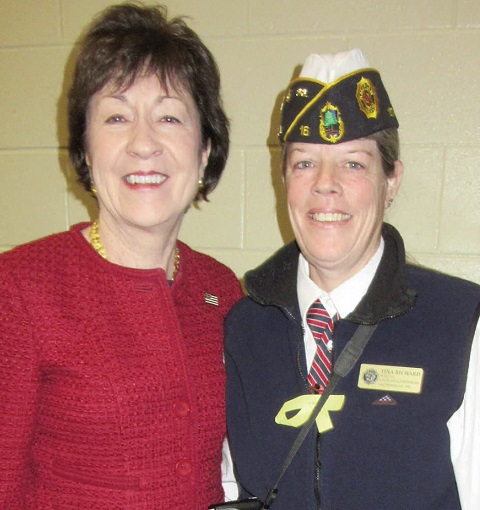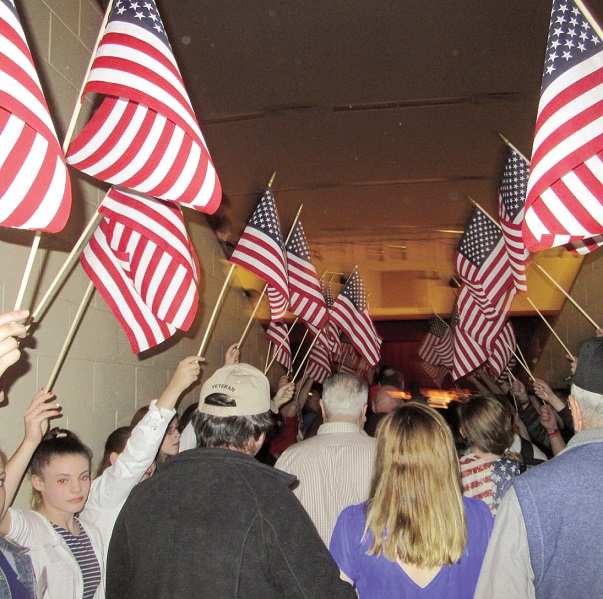by Mary Grow
China Planning Board members apparently denied the more controversial permit application on their Oct. 25 agenda, from Parris and Catherine Varney. They approved the less controversial one from Michael Marois, and for the second time discussed the Howe property on Dirigo Road.
The Varneys’ application to operate a commercial events center in their barn at 701 Neck Road again drew a sizable audience with most members opposed to the plan, citing noise, traffic and other disruptive effects in what they described as an agricultural and residential neighborhood. The Varneys had modified their plan, proposing to operate only Fridays through Sundays from June through September, with no more than four events per month, and to shut down amplified music at 9 p.m. Their original request was to operate any day of the week until 11 p.m.
China’s Land Use Ordinance requires an applicant to meet all of 15 criteria in order to receive a permit. The fifth criterion on the list requires the applicant to prove that the proposed use will not have “a significant detrimental effect on the use and peaceful enjoyment of abutting property as a result of noise, vibrations, fumes, odor, dust, glare or other cause.”
Board member Milton Dudley’s motion that the criterion had been met received only his vote. Chairman Frank Soares and board members Toni Wall and Tom Miragliuolo did not support it. The chairman did not make it clear whether they were opposed or abstaining, but Dudley said later the vote was one in favor to three against.
Board member Jim Wilkens, an abutter to the Varney property, at the beginning of the meeting recused himself from the discussion and votes.
Despite the failure to meet the fifth criterion, Soares continued through the rest of the list. The only other question was about the septic system requirement. Codes Officer Paul Mitnik said state regulations do not allow the planned portable toilets for a commercial use; the Varneys would need to have their septic system evaluated and perhaps expanded.
Board members voted 3-1 with Miragliuolo opposed the criterion would be met if the septic system complied with state codes. After the list was finished, Soares asked the Varneys if they could provide more information if the application were carried over to the planning board’s Nov. 22 meeting. When the Varneys questioned what more they could do, Miragliuolo moved that the 15 criteria had not been met.
The vote on Miragliuolo’s motion that would have had the effect of denying the permit was a 2-2 tie, with Soares and Miragliuolo in the affirmative and Dudley and Wall opposed.
After some inconclusive parliamentary discussion, Mitnik said the Varneys could either appeal or submit a new application. An Oct. 27 email from Mitnik indicated they plan to file an appeal.
Marois, owner of MJEK Enterprises and operator of a seafood eatery at 237 and 239 Lakeview Drive, applied to build a 20-by-30-foot addition to allow indoor seating in addition to outdoor seating and take-out. Planning board members again went through the 15 criteria and unanimously approved the project.
In March, Maoris received approval to run the business year-round instead of seasonally and to extend operating hours to 5 a.m. to 11 p.m.
Board members again talked about Ralph and Linda Howe’s property because of odor from the waste lagoons, which Dudley described as sometimes non-existent and sometimes “gut-wrenching,” depending on weather and wind conditions. Mitnik advised Soares to review the issue with Town Manager Daniel L’Heureux.
Because Nov. 8 is election day and because Soares will not be available, the next planning board meeting is scheduled for Nov. 22.






